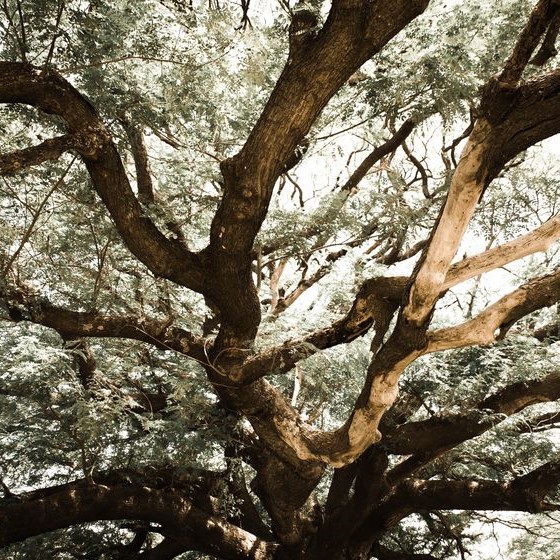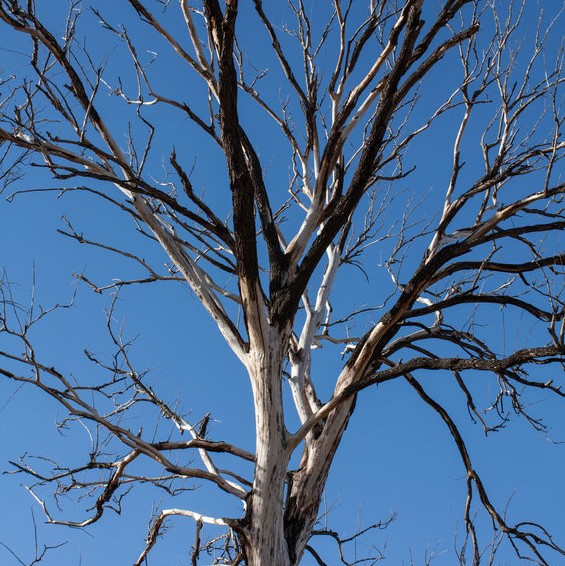
What are the signs of a dead tree?
Oh man, that was a beautiful shade tree in your backyard this summer, what happened? Is it a dead tree or simply dormant? In the forestry industry or national wildlife industry, a dead tree is called a snag, so has that wonderful shade tree in your yard became a snag?
Every state in the U.S. has a dead tree – over 6 billion in eleven states alone! Can you imagine how many dead trees are in the whole country? While it is sad to see our favorite shade tree become an eyesore dead tree, it is a part of the natural process.
However, in a residential area, one dead tree can be an eye sore and a big problem. A dead tree in a residential area could be considered a fire hazard, so something needs to be done with it immediately. You want to make sure it is a dead tree vs live tree before you make the decision what to do with the tree first. The five signs you have a dead tree are:
1. Branches are Brittle and Brown
Snap a twig from the tree in question and scratch the bark. If you see green and moist, you probably don’t have a dead tree, If it is brittle and brown, you have a dead tree. Snap and scratch a few more twigs to make sure it is consistent.
2. Fungal or Mushroom Growing
Are there mushrooms growing off the base or trunk of your tree? It could be dying from the inside out, but it may not be dying. Do a scratch test as described above for confirmation.
3. Cracking or Peeling Bark
Now let’s check the bark’s condition. A tree’s bark protects the inner trunk from getting damaged. So, when there are cracks in the bark, the inner trunk is jeopardized, similar to your roof protecting you house.
If the barked is stripped from the tree on its own accord or has it been removed by human will determine if it is a dying or dead tree. Is the inner trunk smooth? Then it is possible the tree is on its last stand.
4. Foliage Thinning
Like the hair on a man’s head, if the foliage is thinning, then the tree is aging and likely to be dying. If only one side of the tree has thinned foliage, it could be diseased.
5. Trunk Leaning
A leaning tree trunk could indicate you’ll have a dead tree soon. It can also mean the roots have been damaged and the tree’s integrity is compromised. If the tree is near a sidewalk, street, or a house, you need to have it cut back before it falls on somebody or something.
Can a dead tree be revived?
Nope, absolutely not, a dead tree with roots or without root cannot be revived. However, a tree that appears to be sick and dying may be saved. First, you need to identify the problem and know what needs to be done to correct that so you’re not fighting against something that already has gotten a hold of the tree. Here are common problems and what you can do about them going forward to keep from having a dead tree.
- Watering Issues: Too much moisture is a common issue in making trees sick. Make sure there is ample drainage around the tree if it appears to be water-logged. If it doesn’t seem to be getting enough water, schedule routine watering.
- Too Much Mulch: Mulch can be helpful, but it can be harmful too. Too much mulch will choke a tree, so make sure to leave a space between the mulch and around the base so the roots can breathe.
- Proper Fertilizing: Fertilizer can be helpful, and it can be harmful if not applied properly. Dot use the same fertilizer for your lawn on around your trees. Before you start fertilizing a tree, check the soil to see if what kind of nutrients is needs.
- Proper Pruning: Research the proper way to prune your trees to keep them healthy and disease free. If the tree has a diseased area, research how to prune around that area so that you don’t spread the disease. Once you have finished pruning, clean the equipment and tools used thoroughly so you don’t spread the disease to other trees and plants.
How dangerous is a dead tree?
A dead tree can be at risk of many dangers that need to be taken into consideration when determining what should be one with the dead tree. Some of the dangers a dead tree is at risk of causing:
- Injuries – a dead tree has lost its moisture and nutrients because the roots are dead. This means the branches are brittle and are likely to break off and injure anyone within area of the branch.
- Power Lines – a dead tree is susceptible to limbs breaking and falling on power lines and utility lines. The outages this will cause aren’t just going to affect you, but it will affect the entire neighborhood.
- Property Damage – the limbs breaking off a dead tree can fall on your house or vehicle, resulting in catastrophic and expensive damage. It could be worse if the limb falls on a neighbor’s house or vehicle.
- Insurance – Your homeowners’ insurance may not pay any claim if the adjuster finds that the tree should have been trimmed back sooner, citing homeowner neglect.
With these facts stated, should a dead tree be cut down? Yes! It is a dead tree and cannot be revived. Have the tree cut down and hauled away. The cost of a professional cutting down the dead tree is much less than the other possible expenses you may be facing.
What happens to a dead tree?
Once a tree has died, the leaves will fall, and herbaceous plants fall to the ground after producing seeds. The seeds create a layer on the surface of the soil. From that layer, fungi grows and spreads as it breaks down the dead plant structure.

What Do You With The Dead Tree
After you’ve had a dead tree cut down, what do you do with the remains? Is dead tree good for firewood? A dead tree that is bare or has partial bark and has had to “season” will make good firewood once it has dried. Some people have made furniture and other things from a dead tree if the pieces were cut in large enough chunks. It is your dead tree, and the limits are your imagination. Get the help you need with dead tree removal when you call (817) 717-7737.
